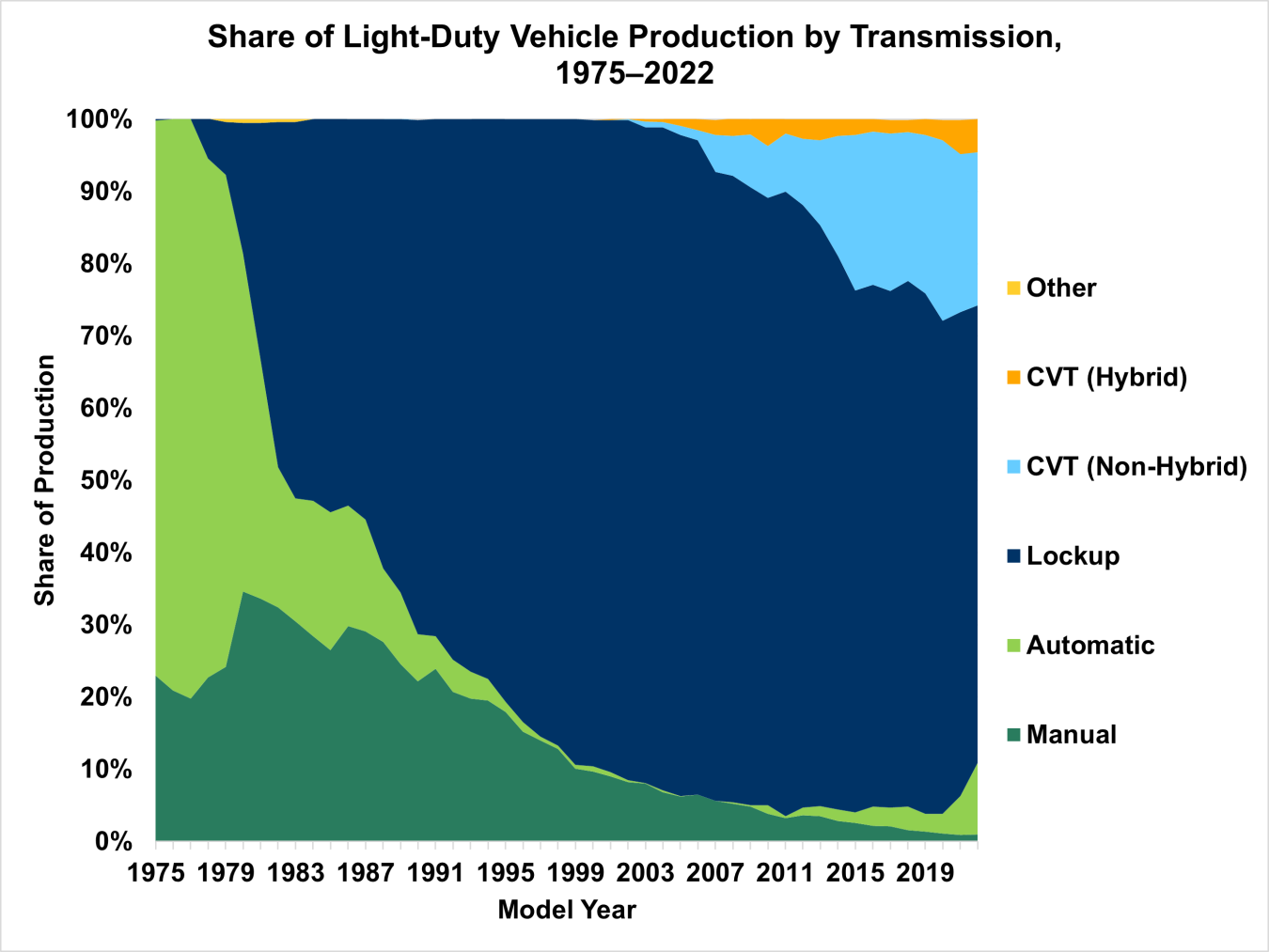Sixty five percent of all light-duty vehicles produced in 1980 had automatic transmissions but more than 99% did in 2022.
March 6, 2023Sixty five percent of all light-duty vehicles produced in 1980 had automatic transmissions but more than 99% did in 2022. This is due to advances in automatic transmissions that provide greater efficiency by optimizing engine operation and reducing energy losses when transmitting power to the wheels.
The first automatic transmissions were not as efficient as manual transmissions, but they became popular because they provided convenience and ease of operation. By the late 1970s, manufacturers began installing automatic transmissions with lockup, a development that improved efficiency by locking the torque converter to reduce frictional losses. Over time, automatic transmissions without lockup were displaced by the more efficient ones with lockup. In 2010, however, automatic dual clutch transmissions were introduced, eliminating the need for a torque converter/lockup and causing an increase in automatic transmissions without lockup. Meanwhile, the introduction of continuously variable transmissions (CVTs) in light-duty vehicles around 2003 allowed for even greater efficiency through expanded gear ratios, and CVTs have increased to about one quarter of all light-duty vehicles produced in 2022. With the advent of more efficient automatic transmissions, manual transmissions have all but disappeared from the U.S. market.

Note: Data for 2022 are preliminary.
Source: Environmental Protection Agency, 2022 EPA Automotive Trends Report, December 2022.

